Automated Spatiotemporal Classification Based on Smartphone App Logs
Abstract
1. Introduction
- Group trajectory-based behavior prediction system: App usage pattern of real-world users is predicted based on location data from mobile data.
- Auto supervision method for trajectory analysis: App usage details and trajectory data are automatically paired and used as auto supervised learning data.
2. Previous Works
2.1. App Datamining
2.2. Trajectory Analysis
3. Proposed Spatiotemporal Analysis
3.1. Spatial Design and Analysis
3.2. App Categories
4. System
4.1. Smartphone’s Data Extraction and Transmission Stage
- IMEI (International Mobile Equipment Identity): It refers to an international unique identification number of a device provided by the manufacturer upon the device leaving the factory. The corresponding information is encrypted and modified to protect the privacy of the users.
- Recent Tasks: It indicates the apps being executed on the device.
- Current Date: It indicates the system time at the termination time point of a transaction.
- Position: It indicates the device location value at the transaction time point.
4.2. Data Preprocessing Stage
4.3. Data Analysis Stage
4.3.1. Basic Statistical Value Analysis
4.3.2. Time Series Repetitive App Patterns
4.3.3. Trajectory Pattern Analysis
5. Experiments
6. Discussion
7. Conclusions
Author Contributions
Funding
Conflicts of Interest
References
- Google Play. Available online: http://play.google.com/ (accessed on 10 March 2019).
- Wikipedia: Google Play. Available online: http://en.wikipedia.org/wiki/Google_Play (accessed on 10 March 2019).
- Hannu, T.V. Analysis of Smartphone User Behavior. In Proceedings of the IEEE International Conference on Mobile Business and 2010 Ninth Global Mobility Roundtable, Athens, Greece, 13–15 June 2010. [Google Scholar]
- Pfeiffer, M.; Paolo, G.; Sommer, H.; Nieto, J.; Siegwart, R.; Cadena, C. A Data-driven Model for Interaction-aware Pedestrian Motion Prediction in Object Cluttered Environments. In Proceedings of the IEEE International Conference on Robotics and Automation (ICRA) 2018, Brisbane, QLD, Australia, 21–25 May 2018. [Google Scholar]
- Zeng, W.; Chen, P.; Yu, G.; Wang, Y. Specification and calibration of a microscopic model for pedestrian dynamic simulation at signalized intersections: A hybrid approach. Transp. Res. Part Emerg. Technol. 2017, 80, 37–70. [Google Scholar] [CrossRef]
- Anvari, B.; Bell, M.G.H.; Sivakumar, A.; Ochieng, W.Y. Modelling shared space users via rule-based social force model. Transp. Res. Part Emerg. Technol. 2015, 51, 83–103. [Google Scholar] [CrossRef]
- Yang, D.; Kurt, A.; Redmill, K.; Ozgüner, U. Agent-based microscopic pedestrian interaction with intelligent vehicles in shared space. In Proceedings of the SCOPE ’17: 2nd International Workshop on Science of Smart City Operations and Platforms Engineering, Pittsburgh, PA, USA, 21 April 2017; pp. 69–74. [Google Scholar]
- Cheng, H.; Sester, M. Agent-based microscopic pedestrian interaction with intelligent vehicles in shared space. In Proceedings of the Annual International Conference on Geographic Information Science, Lund, Sweden, 12–15 June 2018; pp. 309–325. [Google Scholar]
- Yang, D.; Li, L.; Redmill, K.; Ozgüner, U. Top-view Trajectories: A Pedestrian Dataset of Vehicle-Crowd Interaction from Controlled Experiments and Crowded Campus. In Proceedings of the 2019 IEEE Intelligent Vehicles Symposium (IV), Paris, France, 9–12 June 2019. [Google Scholar]
- KISDI IT FOCUS. Korea Information Society Development Institute. 2001. Available online: http://m.kisdi.re.kr/mobile/repo/ (accessed on 10 January 2001).
- Park, B.S.; Cho, I.H.; Cheon, Y.B.; Lee, W.Y.; Lee, J.S. A Log Analysis of Smartphone Application Usage Focusing on Domestic iPhone Users. In Proceedings of the Korean HCI, Kangwon, Korea, 27 January 2011; pp. 1051–1055. [Google Scholar]
- Traffic Analysis and Modeling of IP Core Networks. Helsinki University Of Technology. 2004. Available online: http://citeseerx.ist.psu.edu/viewdoc/download (accessed on 3 December 2004).
- Moghaddam, S.; Helmy, A. Internet usage modeling of large wireless networks using self-organizing maps. In Proceedings of the 7th IEEE International Conference on Mobile Ad-hoc and Sensor Systems (IEEE MASS 2010), San Francisco, CA, USA, 8–12 November 2010. [Google Scholar]
- Hannu, T.V. Contextual Usage-Level Analysis of Mobile Services. In Proceedings of the IEEE International Conference on Mobile and Ubiquitous Systems: Networking & Service, Philadelphia, PA, USA, 6–10 August 2007. [Google Scholar]
- Lee, Y.-S.; Jung, M.-C.; Cho, S.-B. Collection and Construction of User’s Context in Smart Phone. In Proceedings of the Korean Information Science Society Conference, Seoul, Korea, 1 June 2006; pp. 115–117. [Google Scholar]
- Verkasalo, H.T. Empirical Insights on the Evolution of the Finnish Mobile Market. In Proceedings of the 2007 6th Conference on Telecommunication Techno-Economics, Helsinki, Finland, 14–15 June 2007. [Google Scholar]
- Kelly, D.; Smyth, B.; Caulfield, B. Uncovering Measurements of Social and Demographic Behavior From Smartphone Location Data. IEEE Trans. Hum. Mach. Syst. 2013, 43, 188–198. [Google Scholar] [CrossRef]
- Nam, J.S.; Zhang, B.-T. A Method to Discover Mobile Phone User’s Daily Pattern Using Probabilistic Topic Models. In Proceedings of the KIISE Korea Computer Congress 2010, Jeju, Korea, 30 June 2010; pp. 313–316. [Google Scholar]
- Kang, J.-M.; Seo, S.-S.; Hong, J.W.-K. Usage Pattern Analysis of Smartphones. In Proceedings of the 13th Asia-Pacific Network Operations and Management Symposium, Taipei, Taiwan, 21–23 September 2011. [Google Scholar]
- Kang, J.-M.; Seo, S.-S.; Hong, J.W.-K. Collect and analyze smart phone usage patterns for mobile network management. In Proceedings of the 13th Asia-Pacific Network Operations and Management Symposium, Taipei, Taiwan, 21–23 September 2011. [Google Scholar]
- Bell Telephone Laboratories Technical Staff. Transmission Systems for Communications, 3rd ed.; Western Electric Co.: Winston-Salem, NC, USA, 1985; pp. 44–60. [Google Scholar]
- Tapio, S.; Karikoski, J.; Hammainen, H. Diversity and End user context in smartphone Usage Sessions. In Proceedings of the IEEE International Conference on Next Generation Mobile Applications, Services and Technologies, Cardiff, UK, 14–16 September 2011. [Google Scholar]
- Harman, M.; Yue, J.; Yuanyuan, Z. App store mining and analysis: MSR for app stores. In Proceedings of the 2012 9th IEEE Working Conference on Mining Software Repositories (MSR), Zurich, Switzerland, 2–3 June 2012. [Google Scholar]
- Lerner, A.; Chrysanthou, Y.; Lischinski, D. Crowds by Example. Comput. Graph. Forum 2007, 26, 655–664. [Google Scholar] [CrossRef]
- Pellegrini, S.; Ess, A.; Schindler, K.; van Gool, L. You’ll never walk alone: Modeling social behavior for multi-target tracking. In Proceedings of the 2009 IEEE 12th International Conference on Computer Vision, Kyoto, Japan, 27 September–4 October 2009; pp. 261–268. [Google Scholar]
- Hochreiter, S.; Schmidhuber, J. Long short-term memory. Neural Comput. 1997, 9, 1735–1780. [Google Scholar] [CrossRef] [PubMed]
- Chung, J.; Gulcehre, C.; Cho, K.H.; Bengio, Y. Empirical evaluation of gated recurrent neural networks on sequence modeling. In Proceedings of the NIPS 2014 Deep Learning and Representation Learning Workshop, Montreal, QC, Canada, 12 December 2014. [Google Scholar]
- Huang, C.; Wu, B.; Nevatia, R. Robust object tracking by hierarchical association of detection responses. In Proceedings of the European Conference on Computer Vision, Marseille, France, 12–18 October 2008. [Google Scholar]
- Huang, D.-A.; Kitani, K.M. Action-Reaction: Forecasting the Dynamics of Human Interaction. In Proceedings of the European Conference on Computer Vision, Zurich, Switzerland, 6–12 September 2014. [Google Scholar]
- Alahi, A.; Goel, K.; Ramanathan, V.; Robicquet, A.; Fei-Fei, L.; Savarese, S. Social LSTM: Human Trajectory Prediction in Crowded Spaces. In Proceedings of the 2016 IEEE Conference on Computer Vision and Pattern Recognition (CVPR), Las Vegas, NV, USA, 27–30 June 2016. [Google Scholar]
- Lu, Z.; Xia, J.; Wang, M.; Nie, Q.; Ou, J. Short-term traffic flow forecasting via multi-regime modeling and ensemble learning. Appl. Sci. 2020, 10, 356. [Google Scholar] [CrossRef]
- Graham, W. Convolutional Learning of Spatio-temporal Features. In Proceedings of the European Conference on Computer Vision, Heraklion, Crete, Greece, 5–11 September 2010. [Google Scholar]
- Zhao, W.; Gao, Y.; Ji, T.; Wan, X.; Ye, F.; Bai, G. Deep temporal convolutional networks for short-term traffic flow forecasting. IEEE Access 2019, 7, 114496–114507. [Google Scholar] [CrossRef]
- Zhang, W.; Yu, Y.; Qi, Y.; Shu, F.; Wang, Y. Short-term traffic flow prediction based on spatio-temporal analysis and cnn deep learning. Transp. Transp. Sci. 2019, 15, 1688–1711. [Google Scholar] [CrossRef]
- Yang, D.; Li, S.; Peng, Z.; Wang, P.; Wang, J.; Yang, H. Mf-cnn: Traffic flow prediction using convolutional neural network and multi-features fusion. IEICE Trans. Inf. Syst. 2019, 102, 1526–1536. [Google Scholar] [CrossRef]
- Liao, S.; Chen, J.; Hou, J.; Xiong, Q.; Wen, J. Deep convolutional neural networks with random subspace learning for short-term traffic flow prediction with incomplete data. In Proceedings of the 2018 International Joint Conference on Neural Networks (IJCNN), Rio de Janeiro, Brazil, 8–13 July 2018; pp. 1–6. [Google Scholar]
- Kan, G.; Hu, Y.; Qian, Z.; Liu, H.; Zhang, K.; Sun, Y.; Gao, J.; Yin, B. Optimized graph convolution recurrent neural network for traffic prediction. IEEE Trans. Intell. Transp. Syst. 2020, in press. [Google Scholar]
- Du, S.; Li, T.; Gong, X.; Horng, S.-J. A Hybrid Method for Traffic Flow Forecasting Using Multimodal Deep Learning. arXiv 2018, arXiv:1803.02099. [Google Scholar] [CrossRef]
- Tampubolon, H.; Yang, C.-L.; Chan, A.S.; Sutrisno, H.; Hua, K.-L. Optimized capsnet for traffic jam speed prediction using mobile sensor data under urban swarming transportation. Sensors 2019, 19, 5277. [Google Scholar] [CrossRef] [PubMed]
- Kang, D.-J.; Cho, S.-H.; Kang, S.-J. A Framework for Usage Pattern Analysis of Smartphone Applications. KIISE Trans. Comput. Pract. 2013, 19, 502–508. [Google Scholar]
- Agrawal, R.; Srikant, R. Fast Algorithms for Mining Association Rules in Large Databases. In Proceedings of the 20th International Conference on Very Large Data Bases, San Francisco, CA, USA, 12–15 September 1994. [Google Scholar]
- Agrawal, R.; Srikant, R. Mining Sequential Patterns. In Proceedings of the Eleventh International Conference on Data Engineering, Taipei, Taiwan, 6–10 March 1995. [Google Scholar]
- Ye, Y.; Chiang, C. A Parallel Apriori Algorithm for Frequent Itemsets Mining. In Proceedings of the Fourth International Conference on Software Engineering Research, Management and Applications (SERA’06), Seattle, WA, USA, 9–11 August 2006. [Google Scholar]
- Jang, S.; Cho, S. Evolving neural NPCs with layered influence map in the real-time simulation game ‘Conqueror’. In Proceedings of the 2008 IEEE Symposium On Computational Intelligence and Games, Perth, Australia, 15–18 December 2008. [Google Scholar]
- Wikipedia: Flood-Fill Algorithm. Available online: https://en.wikipedia.org/wiki/Flood_fill (accessed on 2 May 2020).
- Karen, S.; Zisserman, A. Very Deep Convolutional Networks for Large-Scale Image Recognition. In Proceedings of the International Conference on Learning Representations, San Diego, CA, USA, 7–9 May 2015. [Google Scholar]
- Kingma, D.P.; Ba, J.L. Adam: A method for stochastic optimization. arXiv 2014, arXiv:1412.6980. [Google Scholar]
- Kang, S.-J.; Kim, Y.-B.; Park, T.; Kim, C.-H. Automatic player behavior analysis system using trajectory data in a massive multiplayer online game. Multimed. Tools Appl. 2013, 66, 383–404. [Google Scholar] [CrossRef]
- Dube, P.; Bhattacharjee, B.; Huo, S.; Waston, P.; Kender, J.; Belgodere, B. Automatic Labeling of Data for Transfer Learning. Nature 2019, 241, 192255. [Google Scholar]
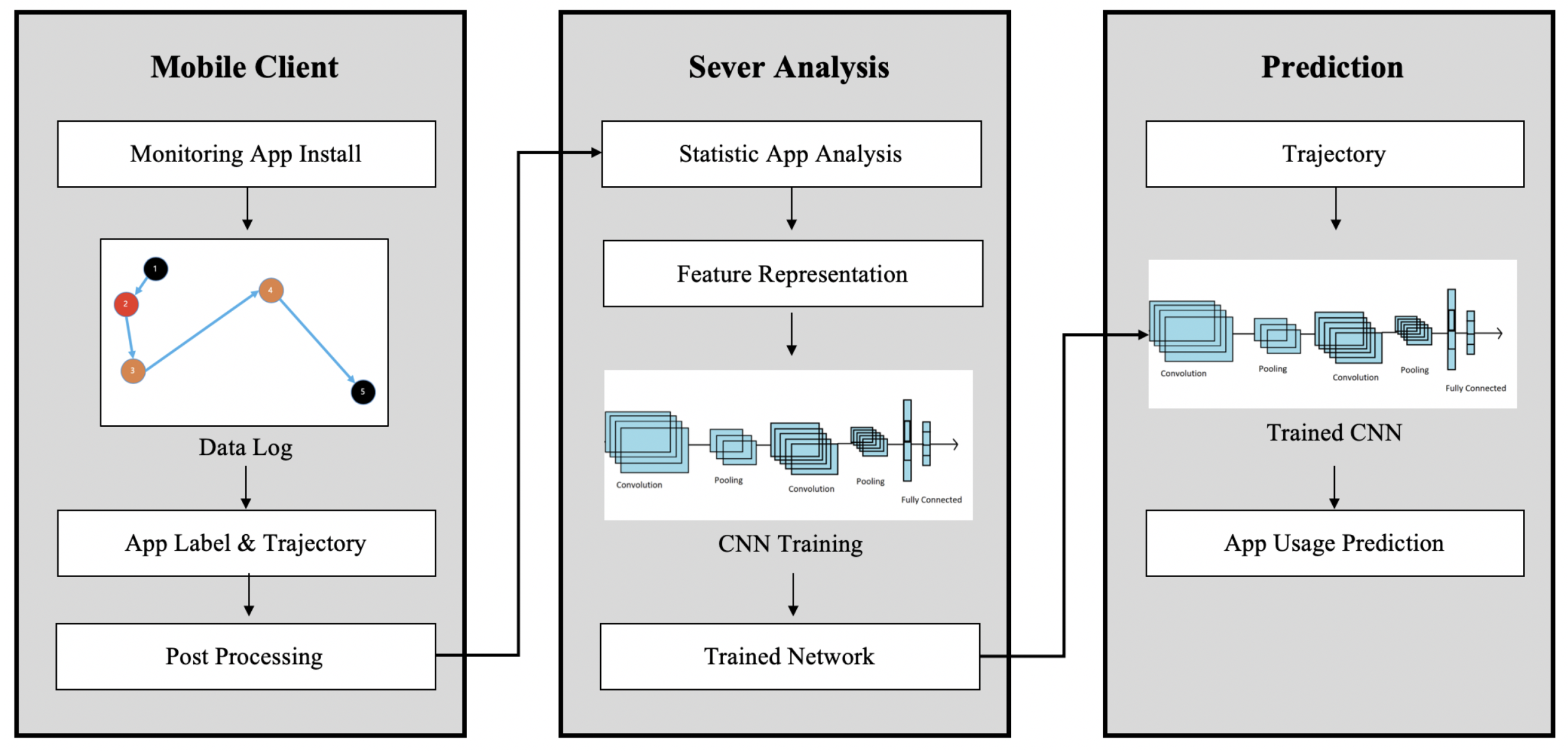
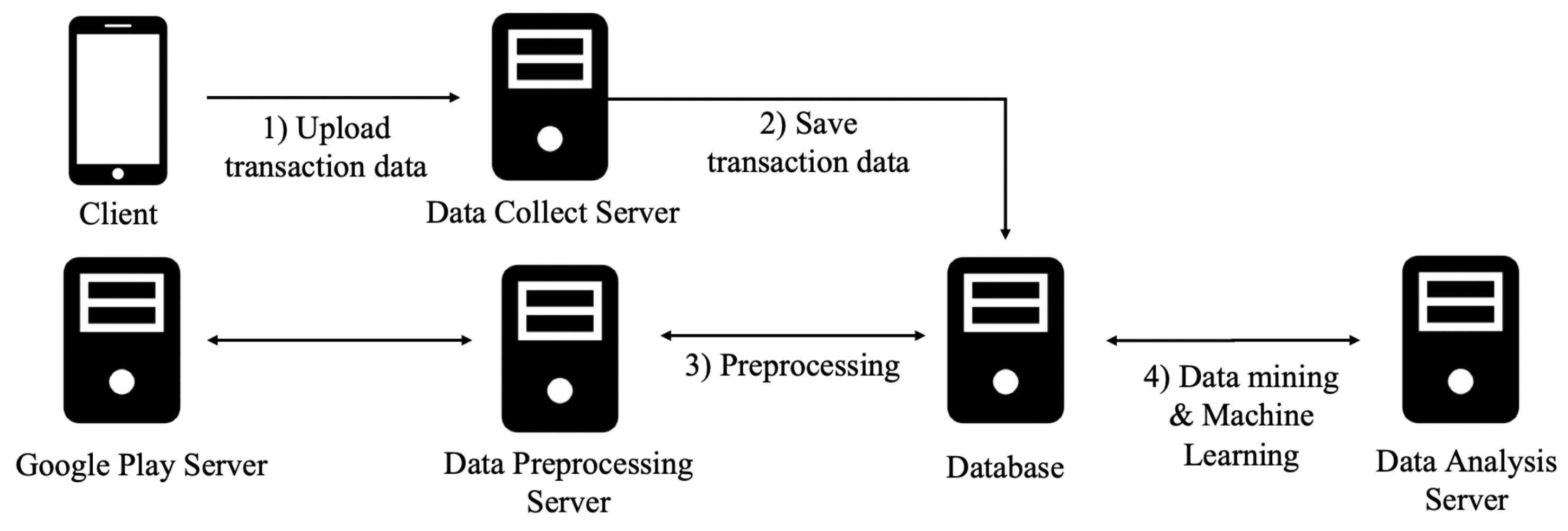
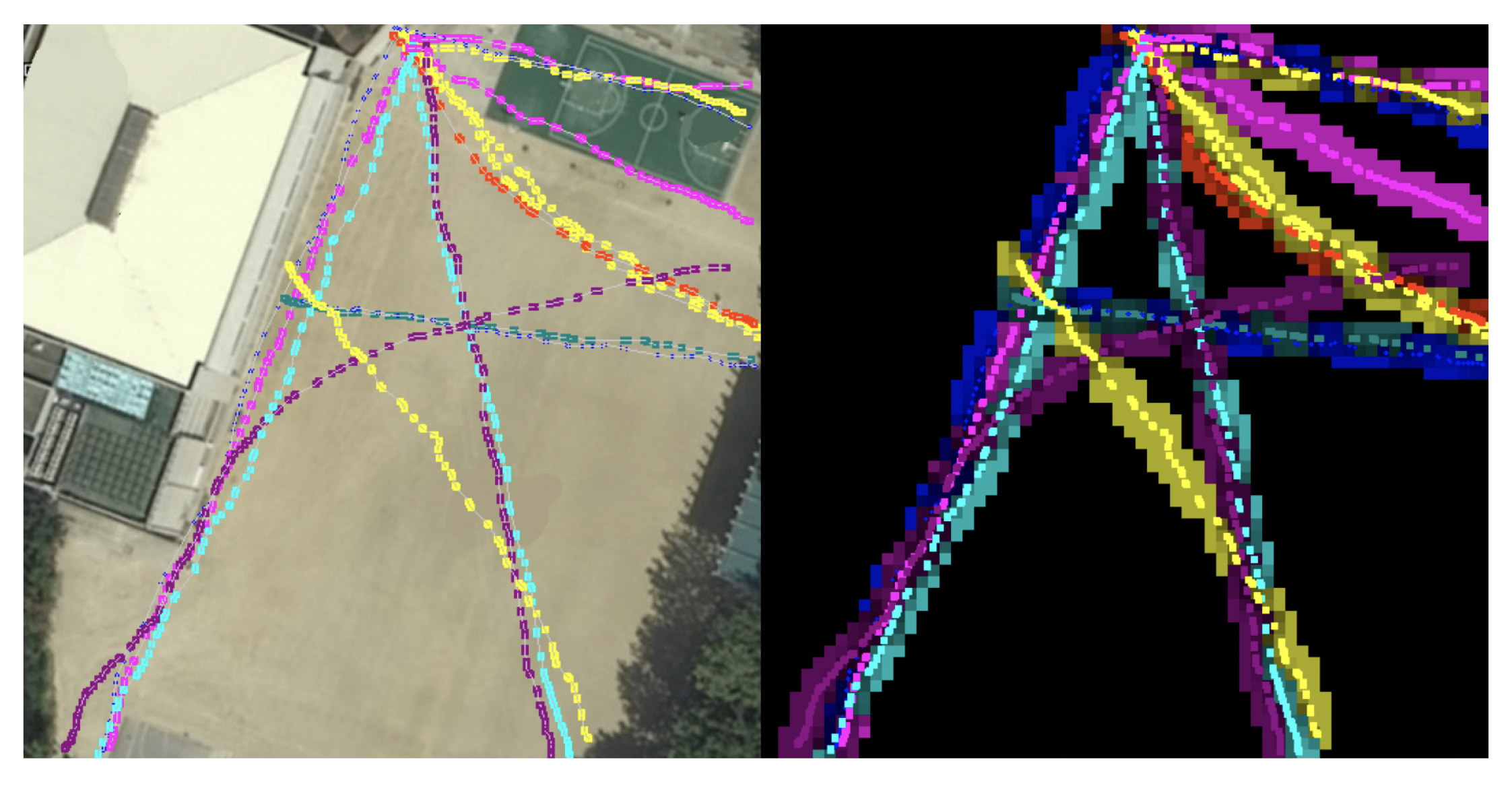

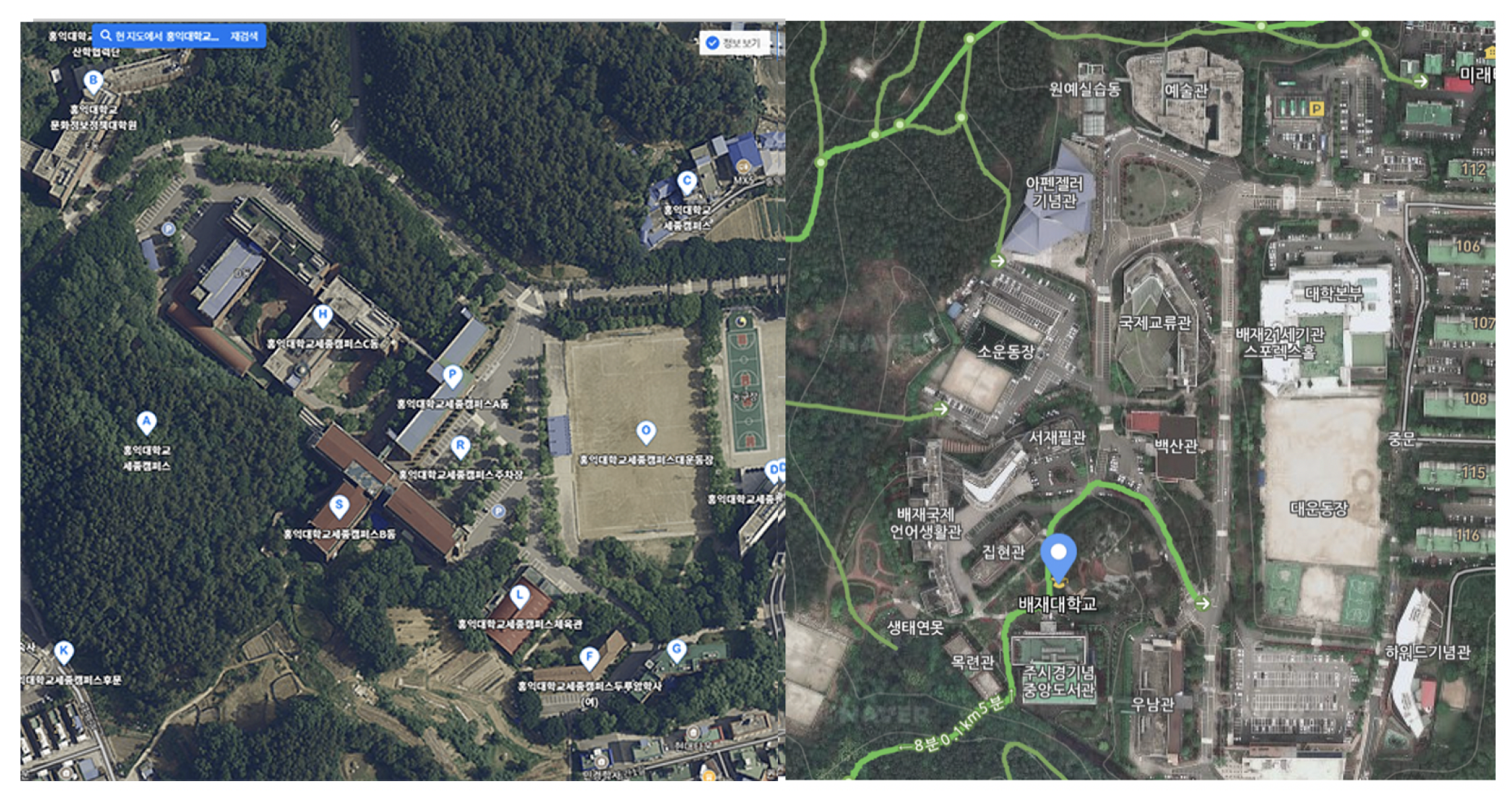

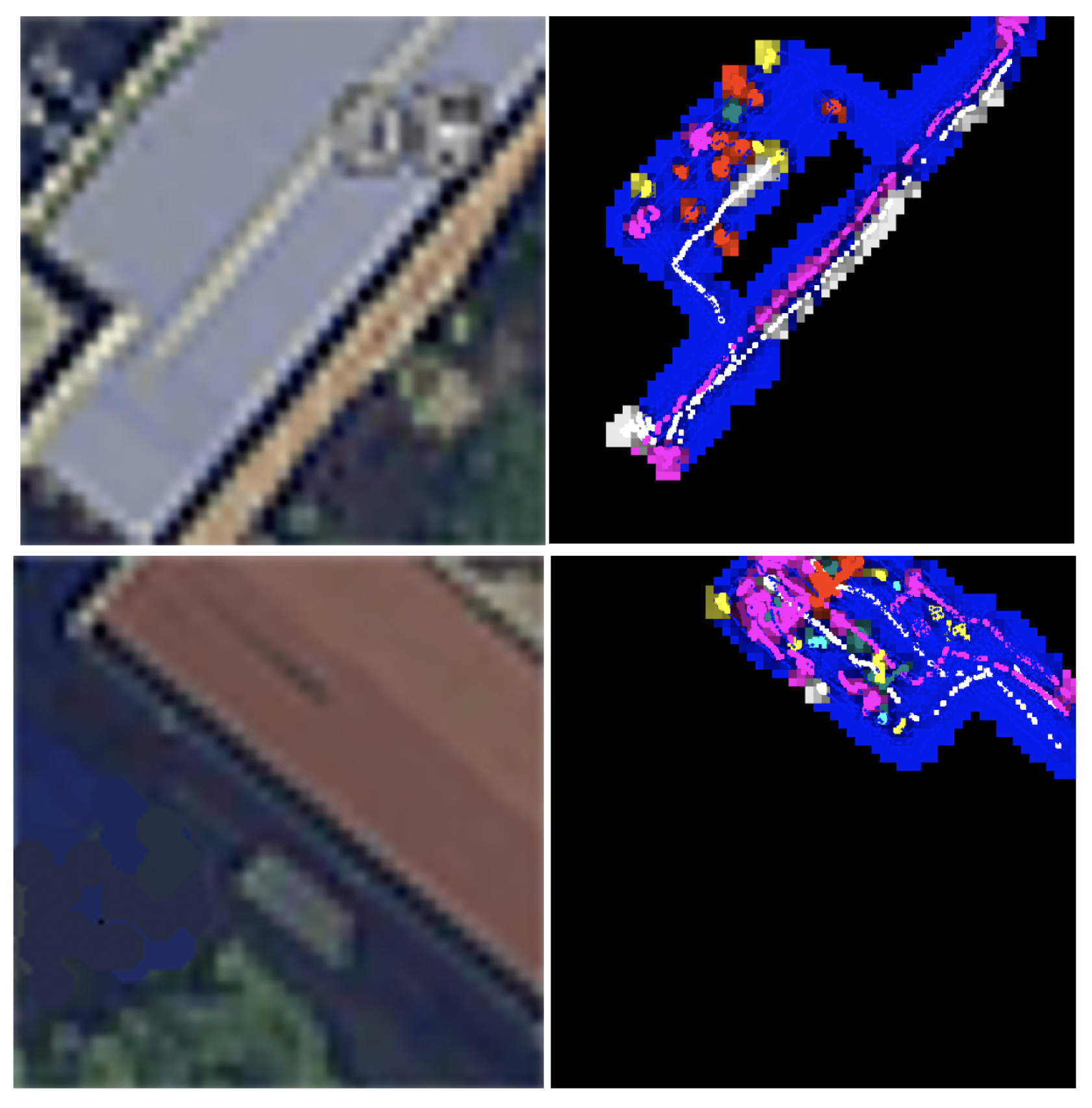
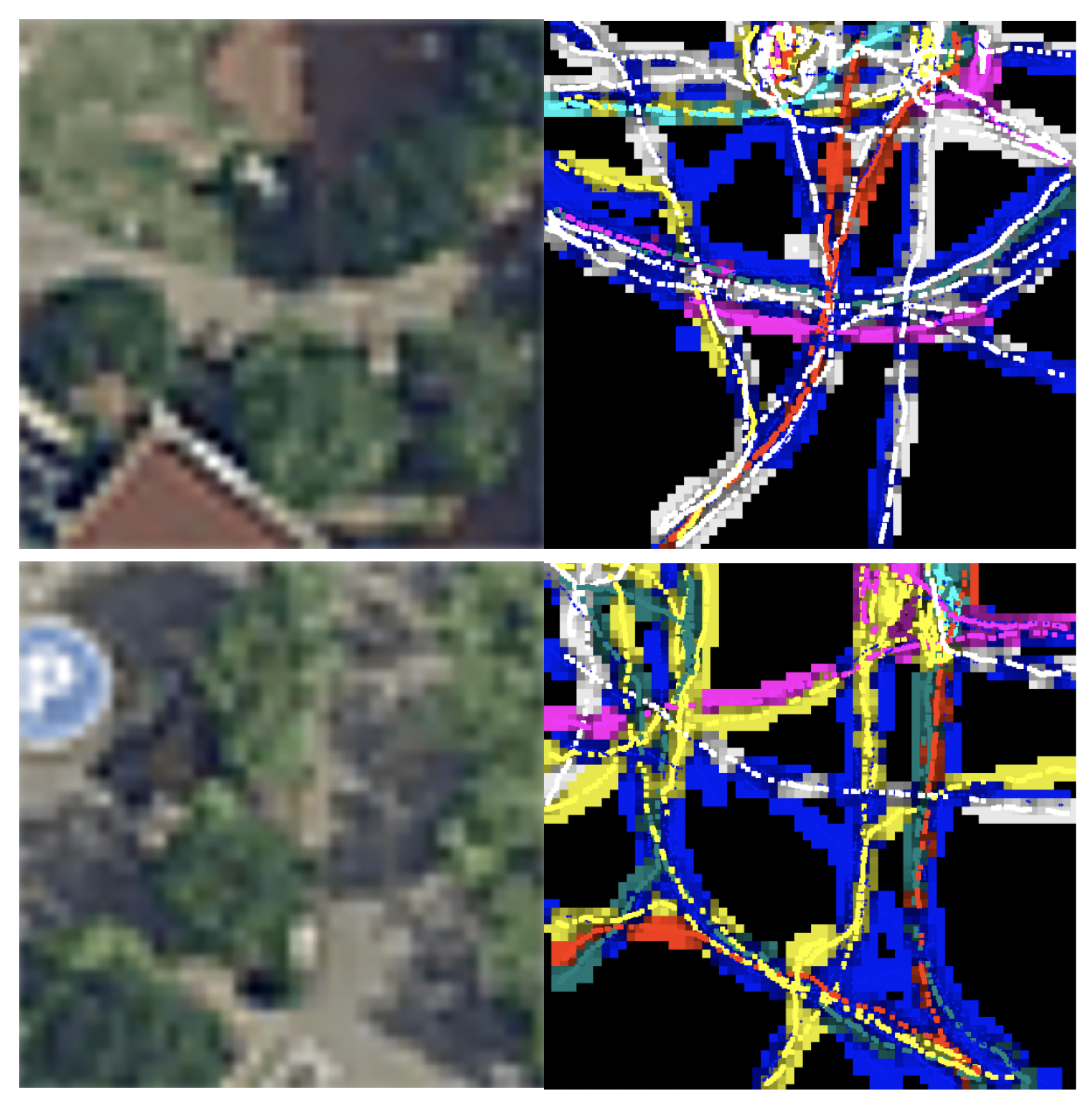
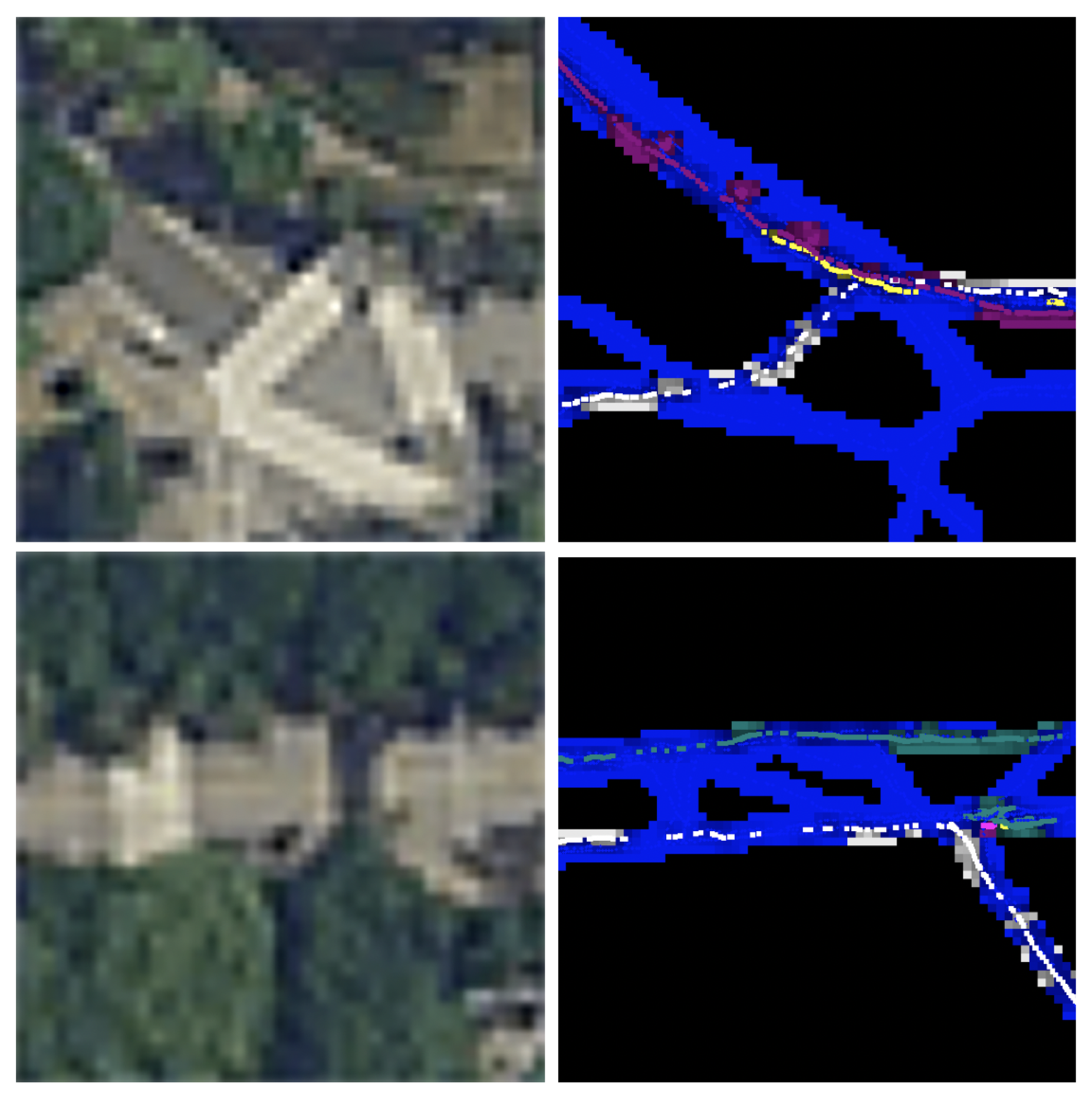

| Proposed Category | Google Category |
|---|---|
| Information | Art and Design, Auto and Vehicle, Beauty, Book and Reference, Tools, Travel and Local, Tools, Video Players and Editors, Weather, Food and Drink, Health and Fitness, House and Home, Libraries and Demo, Lifestyle, Medical, Penalization, Events, Productivity |
| Navigation | Map and Navigation |
| News | News and Magazines |
| Communication | Communication and Social |
| Education | Education |
| Entertainment | Dating, Entertainment, Sports, Game, Music and Audio, Comics |
| Finance | Finance and Business |
| Photography | Photography |
| Shopping | Shopping |
| Category | Parameters |
|---|---|
| Density | Position density in grid: The number of position sample points in a unit grid. |
| Time | Stalling time with App: Stalling time while user uses app. |
| Stalling time without App: Stalling time while user does not use the app. | |
| Direction | Principle Axis Direction: Representative axis in unit grid (Direction of main road or main building). |
| Avg. Trajectory Direction: Average direction vector of trajectory in unit grid. | |
| Directional Homogeneity: Difference of every trajectory direction with Avg. trajectory direction. | |
| Variance of Trajectory Direction: Standard deviation of trajectory direction in unit grid. |
| Category | Classification Ratio | Classification Accuracy |
|---|---|---|
| Information | 29% | 90% |
| Communication | 22% | 87% |
| Entertainment | 15% | 92% |
| News | 14% | 53% |
| Education | 7% | 76% |
| Shopping | 4% | 76% |
| Finance | 4% | 73% |
| Photography | 2% | 50% |
| Navigation | 2% | 81% |
| Frequent Patterns | Ratio |
|---|---|
| Communications > Information | 36% |
| Information > Communications | 18% |
| Communications > News | 15% |
| Communications > Entertainment | 10% |
| Information > Finance | 9% |
| Communications > Finance | 8% |
| Communications > Navigation | 4% |
| Training Data | Classification Accuracy |
|---|---|
| Raw Trajectory Image Data | 24.1% |
| IM Data (excluding trajectory without app) | 45.2% |
| IM Data (including trajectory without app) | 65.6% |
| IM Data (including trajectory without app with additional seven features) | 75.3% |
© 2020 by the authors. Licensee MDPI, Basel, Switzerland. This article is an open access article distributed under the terms and conditions of the Creative Commons Attribution (CC BY) license (http://creativecommons.org/licenses/by/4.0/).
Share and Cite
Kang, S.; Kim, Y.; Kim, S. Automated Spatiotemporal Classification Based on Smartphone App Logs. Electronics 2020, 9, 755. https://doi.org/10.3390/electronics9050755
Kang S, Kim Y, Kim S. Automated Spatiotemporal Classification Based on Smartphone App Logs. Electronics. 2020; 9(5):755. https://doi.org/10.3390/electronics9050755
Chicago/Turabian StyleKang, Shinjin, Youngbin Kim, and Sookyun Kim. 2020. "Automated Spatiotemporal Classification Based on Smartphone App Logs" Electronics 9, no. 5: 755. https://doi.org/10.3390/electronics9050755
APA StyleKang, S., Kim, Y., & Kim, S. (2020). Automated Spatiotemporal Classification Based on Smartphone App Logs. Electronics, 9(5), 755. https://doi.org/10.3390/electronics9050755





